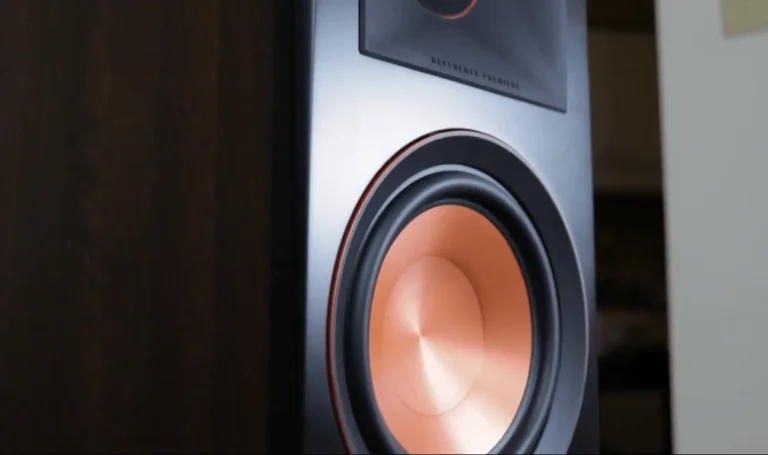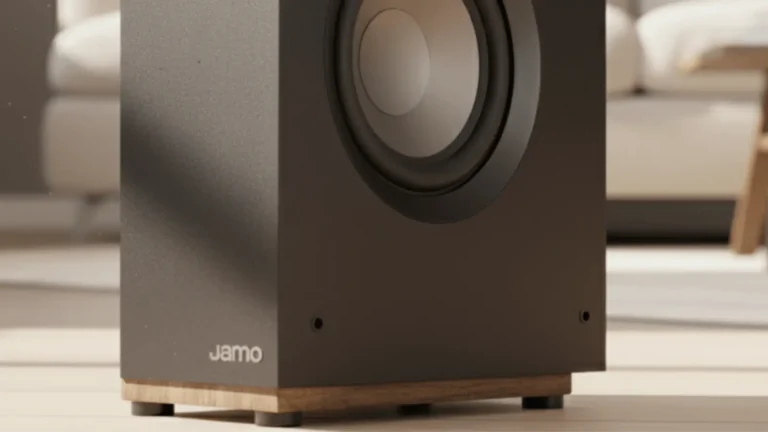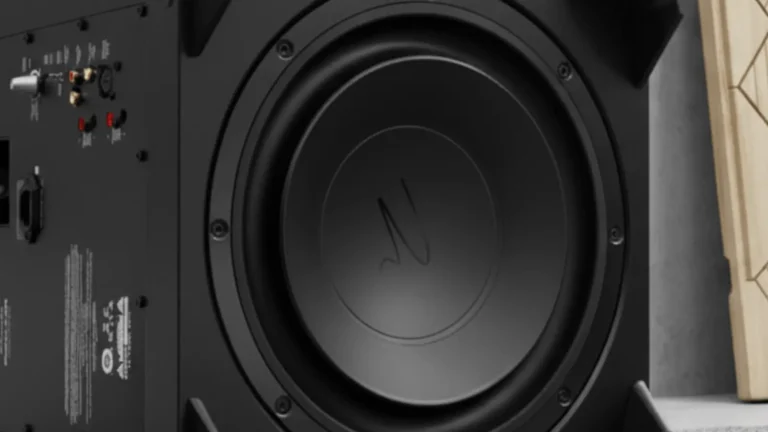Denon PMA-1700NE Review: A Pure, Powerful Integrated Amplifier with Digital Inputs
If you’re in the market for a reasonably priced, classic integrated amplifier with digital inputs but without all the extra streaming features and apps, after my Denon PMA-1700NE Review, I think the Denon PMA-1700NE could be the perfect choice. This Japanese amplifier offers a blend of performance and traditional ease of use, without unnecessary frills, but with plenty of smart, thoughtful details.
Design & Build Quality
At first glance, the Denon PMA-1700NE looks like a classic amplifier, featuring familiar controls like power, tone adjustments, balance, volume, source selection, and a headphone jack, reminiscent of older models like the Klein + Hummel ES20 from 1972.
However, this modern amplifier comes with additional features and enhancements for better sound quality. For instance, it includes a “Source Direct” function that bypasses tone controls if desired and a switch for the phono input that toggles between moving coil and moving magnet settings. Moreover, users can deactivate the digital section and D/A conversion, as well as the display, to minimize any potential high-frequency interference.
You might like: Denon DM41DAB Review
OLED Display & Remote Control
The amplifier’s OLED display is large and easy to read from a distance, making it convenient for users to see the settings from across the room. Additionally, the display brightness can be adjusted using the remote control for those who prefer a darker environment. Overall, the Denon PMA-1700NE combines classic design with modern features and thoughtful enhancements for an optimal listening experience.
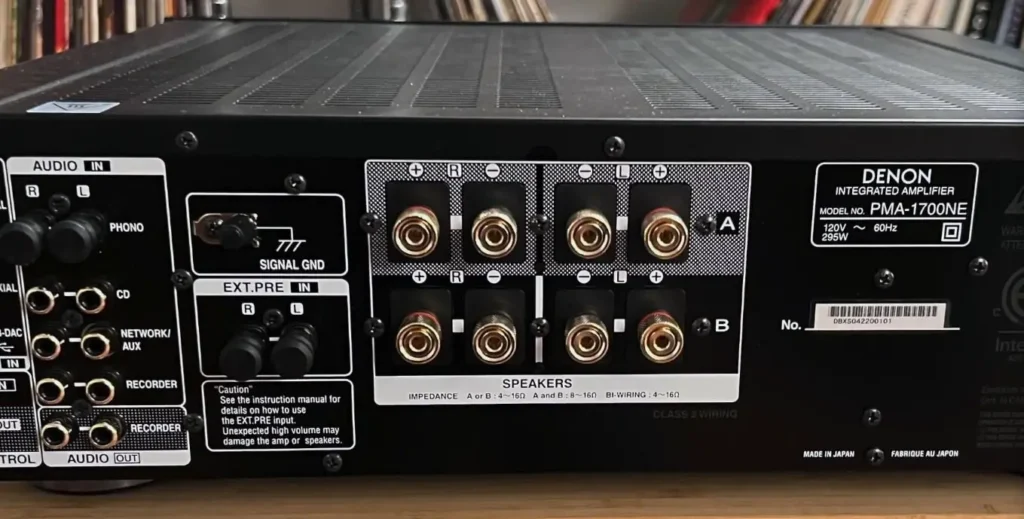
The Denon PMA-1700NE boasts some truly ingenious equipment details that become apparent upon closer inspection, particularly on the rear panel. Unlike most competitors, which typically feature outputs from the built-in preamp, the Denon offers inputs for integrated power amps instead. This unique design allows for seamless integration of the integrated amplifier into a home cinema system.
For those looking to incorporate their stereo system into a surround sound setup, connecting the power amplifiers of the PMA-1700NE to the left and right preamplifier outputs of an AV receiver is all that’s needed. Simply select “EXT-Pre” as the input, and the integration is complete.
Furthermore, the PMA-1700NE has also considered TV sound integration. By connecting your TV to the first optical digital input, the amplifier automatically switches to this input as soon as a sound signal is detected from the television, even when in standby mode. This TV function can be customized according to personal preference, offering nearly the same convenience as a soundbar within the stereo system, but with vastly superior sound quality.
Upon closer inspection beneath the surface of the Denon PMA-1700NE, one can easily discern the meticulous attention to detail in its construction. Each component, from the power supply to the digital board, is housed in separately shielded chambers, ensuring consistent isolation. Astute observers will also notice the absence of mechanical connections, such as those typically found in traditional analog controls.
Indeed, the controls on the front panel may appear analog, but they serve as mere transmitters for electronic controls. While this might initially seem like a departure from tradition, it holds considerable merit for audiophiles. This design allows for perfect, synchronized adjustments across channels and enables rotary resistors aligned on a single axis to operate safely within their designated control ranges. By avoiding the necessity for signal paths to loop forward and backward, potential interference is minimized, resulting in cleaner, more pristine audio output.
Hearing Test
Equipped with Denon’s sizeable and user-friendly remote control, I embarked on the listening test. Immediately, I was struck by the PMA-1700NE’s ability to reproduce instrument attacks with remarkable clarity, particularly evident in piano and vibraphone passages. Across various recordings, the amplifier impressed me with its precise imaging of instruments, projecting them with distinct definitions extending from well in front of the speakers to deep behind.
Comparing the Denon to its counterpart, the Atoll IN200 Signature, which falls within the same price range of around 2,000 euros, was an interesting endeavor. The French amplifier, a favorite among LowBeats editors, presented a contrasting sonic character. While the Atoll exhibited a more grounded and less plastic portrayal, it maintained a sense of correctness in size relationships.
One track that highlighted the differences between the two amplifiers was “Vision Of Love” by Mariah. The Atoll rendered Mariah’s vocals smaller and more confined between the speakers, whereas the Denon placed her larger and more expansively within the room. During the acoustically intricate climax of the song, the Denon effortlessly dissected the layers, revealing individual sounds and elements with clarity, while the Atoll began to lose some separation and coherence.
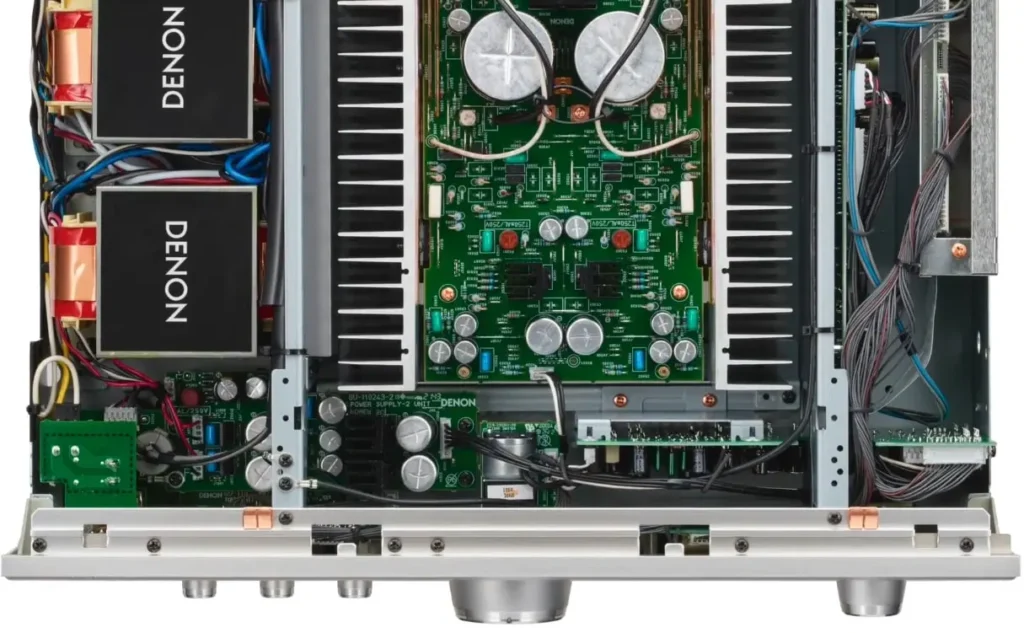
Switching to the high-resolution master of “Pulp,” the divergence became apparent from the outset with the noise preceding “Something Changed.” The background noise sounded slightly brighter and more pronounced on the Denon compared to the Atoll. Furthermore, the PMA-1700NE accentuated Ella Fitzgerald’s voice with a subtle yet distinct transient emphasis, akin to refining a digital photo, which added to its overall character without veering into sharpness or harshness.
Finally, it was time to put the phono input of the Denon to the test. The first step was to remove the standard short-circuit plugs, which electrically terminate the phono input when not in use, thereby improving the signal-to-noise ratio. With everything set up, I connected my vintage Tangential turntable and placed Maceo Parker’s “Roots Revisited” on the platter.
Check Out: Denon Home Amp
Simultaneously, I loaded the same recording from the master into Roon for comparison. To my surprise, the playback from my Ortofon X5-MC cartridge sounded practically identical in tonality and resolution to the digitally fed recording. The only noticeable difference was that the stage image seemed slightly narrower and more distant, likely due to the inherent limitations of channel separation in vinyl rather than any shortcomings of the Denon amplifier.
Conclusion: Denon PMA-1700NE Integrated Amplifier
With the PMA-1700NE, Denon has crafted a finely engineered integrated amplifier that incorporates digital inputs, including USB 2.0 audio for high-resolution playback. The automatic signal detection at the optical input provides convenient control for television integration, akin to a soundbar experience. The phono input, catering to both MC and MM cartridges, delivers a wonderfully balanced sound. The direct input for power amplifiers facilitates seamless integration of the stereo system into a surround setup, with robust output stages providing both sensitivity and power.
Tonally, the amplifier leans towards precision and clarity without veering into brightness. It exhibits a subtle yet impactful transient response, enhancing spatial imaging with a detailed, almost supernatural sharpness that doesn’t become intrusive but rather acts like a magnifying glass, revealing intricate details within complex arrangements. Despite its ability to discern fine nuances, the PMA-1700NE maintains a smooth and cohesive sound profile, indicative of genuine resolution.
Pros And Cons of the Denon PMA-1700NE Integrated Amplifier
Pros of the Denon PMA-1700NE Integrated Amplifier
High-Quality Sound: Delivers crisp, clear audio with precise imaging and balanced tonality.
Versatile Connectivity: Offers digital inputs, including USB 2.0 audio, as well as a phono input compatible with MC/MM cartridges.
Automatic Signal Recognition: Conveniently switches to the optical input when a signal is detected, making it easy to integrate with other devices like televisions.
Seamless Surround Integration: Direct inputs for power amplifiers enable straightforward integration into surround sound systems.
Cons of the Denon PMA-1700NE Integrated Amplifier:
Price: At around US$2,099.00, it may be considered relatively expensive compared to some other integrated amplifiers on the market
Frequently Asked Questions (FAQs) about the Denon PMA-1700NE Integrated Amplifier:
What are the key features of the Denon PMA-1700NE?
The Denon PMA-1700NE is a high-quality integrated amplifier with digital inputs, including USB 2.0 audio support for high-resolution playback. It also features a phono input compatible with both MC (Moving Coil) and MM (Moving Magnet) cartridges. Additionally, it offers direct inputs for power amplifiers, enabling seamless integration into surround sound systems.
How does the automatic signal recognition feature work?
The amplifier’s automatic signal recognition at the optical input allows for convenient control of connected devices, such as televisions. When a sound signal is detected from the television, the amplifier switches to the optical input automatically, providing a hassle-free experience similar to using a soundbar.
Can the Denon PMA-1700NE be integrated into a surround sound system?
Yes, the amplifier offers direct inputs for power amplifiers, allowing for uncomplicated integration into surround sound setups. This feature enables users to seamlessly incorporate their stereo system into a larger home theater configuration.
How does the phono input perform with MC and MM cartridges?
The phono input of the Denon PMA-1700NE delivers a finely balanced sound, suitable for both MC and MM cartridges. Users can expect excellent performance and fidelity when playing vinyl records with this amplifier.
What is the tonal profile of the Denon PMA-1700NE?
The amplifier offers a tonal tuning that leans towards precision and clarity without sounding overly bright. It provides a subtle yet impactful transient response, enhancing spatial imaging and revealing intricate details within the music.
Does the amplifier maintain audio quality when handling complex arrangements?
Yes, the Denon PMA-1700NE excels at separating the finest details even in complex arrangements without introducing sharpness or distortion. Its ability to maintain smooth and cohesive sound quality speaks to its genuine resolution and audio performance.
Is the Denon PMA-1700NE suitable for audiophiles?
The amplifier’s combination of features, performance, and versatility makes it an excellent choice for audiophiles seeking high-quality sound reproduction and uncompromising audio performance.
What sets the Denon PMA-1700NE apart from its competitors?
The Denon PMA-1700NE stands out for its meticulous construction, versatile features, and exceptional sound quality. Its thoughtful design, including separately shielded chambers and electronic controls, contributes to its overall performance and usability.
Denon PMA-1700NE integrated amplifier Specifications
Denon PMA-1700NE
Output power: 2 x 70/140 watts at 8/4 ohms
phono: MM: 2.5 mV / 47 ohms
MC: 200 μV / 100 ohms
Analog input: 4
Analog output (REC): 1
Optical digital: 2 to 192kHz/24bit
RCA digital: 1 to 192kHz/24bit
USB B Audio: 1
PCM up to 384kHz/32-bit
DSD up to 11.2Mhz
Headphone output: 1 6.35mm jack plug
Standby power consumption: 0.2W TV Autoplay off
0.4W TV Autoplay on
Dimensions (WxDxH): 43.4 x 13.5 x 41.0 cm
Weight: 17.6 kilos


